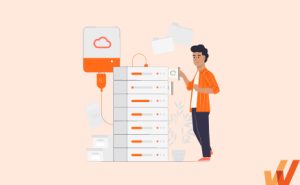Digital Transformation for Telecom Operators (+Examples)
- Published:
- Updated: April 18, 2024

Telecom companies must embrace digital transformation to remain competitive, evolve their business models, and provide the level of service customers expect. Digital tools make customer experiences better and their services more innovative.
This means moving to approaches that meet today’s market and needs. In this article, we’ll walk you through what it takes to transform your telecom business. You’ll discover key components, challenges, and real-world examples.
What Is Digital Transformation in Telecommunications?
In the telecom industry context, digital transformation is an overhaul of how telcom businesses operate, by sunsetting outdated, manual processes and adopting new, cloud technologies that help you align with modern demands.
What does this look like in practice? It includes things like AI-driven analytics, which helps you make smarter decisions. It also includes rolling out 5G networks that speed up internet service. Employees and customers alike benefit from these changes.
Key Areas of Telecom Digitalization
What core areas of telecom are seeing the most change? Take a look at these three core transformation areas to see what is driving the digitalization of telecommunications.
1. Upgrading networks
We’re in an increasingly digital world, with everything just a click to tap away. To adapt, telecom companies are pouring resources into making their networks faster and more reliable. Global 5G population coverage was forecast to reach 45% at the end of 2023 and is projected to increase to around 85% in 2029. By transitioning to 5G, consumers and businesses can enjoy high-speed connectivity as standard.
2. Implementing cloud solutions
Telecom companies are shifting their operations to the cloud. Cloud computing can scale, cut costs, and add flexibility. This move helps organizations use resources better and become more agile. According to Deloitte’s Future of Cloud Survey, global 5G population coverage was forecast to reach 45% at the end of 2023 and is projected to increase to around 85% in 2029.
3. Embracing AI and automation
AI and automation are transforming how telecom companies do things, from handling customer questions to managing networks. Using AI for chatbots, for example, allows for more personalized interactions with customers. At the same time, automation helps make the company’s day-to-day tasks run smoother.
In NVIDIA’s State of AI in Telecommunications: 2024 Trends Survey, 90% of respondents said they were currently engaged with AI, either at the assessment/pilot stage or at the implementation/using stage.
Benefits of Digital Transformation in Telecom
What can your telecom organization expect when you focus on digital transformation initiatives? Here are some of the common benefits.
1. New business models
Digital transformation empowers telecom companies to try out new growth paths. Thanks to IoT telecom can explore spaces like smart homes and connected vehicles. Take AT&T, for example. They used AI and the cloud to change up their business, offering services like predictive maintenance.
2. Revenue growth
By diversifying what they offer and exploring new markets, they can find new sources of income and jump on trends. Moving to cloud infrastructure and cutting costs also leads to better profit margins.
3. Improved customer experience
Telecoms are using digital transformation to take their service to the next level. With AI analytics and automation, they can tailor their services, predict what customers will need next, and solve problems quickly.
According to McKinsey, 71% of consumers expect companies to deliver personalized interactions. And 76% get frustrated when this doesn’t happen. Telecoms improve interactions by automating things like billing and giving customers self-service options.
4. Streamlined processes
Going digital is about more than just improving customer experience. It’s also about making operations run better behind the scenes. Telecom companies can make their workflows more efficient and cut down on manual work. For example, with integrated network management tools, telecoms can monitor their infrastructure in real-time from any location.
Challenges of Telecom Digital Transformation
While digital transformation comes with many opportunities, there are also challenges to be aware of. This is what you should know before jumping into telecom digital transformation.
1. Infrastructure changes
The shift to 5G and beyond means putting money into improving networks and ensuring it all works with the old systems. There are lots of steps, like figuring out where to roll out changes first and how to deal with the impact of potential issues or downtime.
2. Compliance and regulations
The telecom world is tightly controlled. Sticking to rules about privacy, keeping the network safe, and ensuring customers are treated right is a must. This means telecoms have to keep up with laws like the GDPR. Slipping up could cause legal issues and reputational damage.
3. End-user onboarding, training, and support
A large part of moving into digital for telecoms is ensuring end-users (technicians and customers) are smoothly onboarded to new tech. Telecoms need to offer contextual assistance and training, from in-app guidance on new software to on-demand help for troubleshooting.
With a digital adoption platform (DAP) like Whatfix, telecom providers can enable their end-users to adopt new technologies and digital tools through contextual in-app onboarding, reinforcement training, and self-help support – all at key moments of need.
With Whatfix Analytics, track and analyze end-user behavior with User Actions. This empowers telecommunications IT teams to identify areas of end-user friction, map optimal user flows, build flows for different user cohorts, and more.
Software clicks better with Whatfix's digital adoption platform
Enable your employees with in-app guidance, self-help support, process changes alerts, pop-ups for department announcements, and field validations to improve data accuracy.
4. Resistance to change
Change isn’t always met with the warmest welcome, which can slow down adoption. Workers might be wary of new tech or prefer how things were before. Getting input from staff, providing training, and gathering feedback can make all the difference – helping to eliminate internal resistance to change before it becomes a major issue.
5. New competition from CSP alternatives
Telecoms aren’t just competing with each other services. They’re also competing with services like streaming platforms. The user penetration rate of video streaming is predicted to be 49% in 2024 and is expected to increase to 52.4% by 2027.
Cloud providers have also been increasingly competing directly with CSPs. This may be reaching a global tipping point in 2024. Some buyers of connectivity services could see cloud companies as possible alternatives. To keep up, telecoms have to broaden what they offer. That can take many forms, from new products to partnerships
Examples of Telecommunications Digital Transformation
Ready to explore the leading drivers of digital transformation for telecom providers? From telecom expense management (TEM) software to AI-powered predictive maintenance, these examples of this shift in telecom.
1. Telecom expense management (TEM) software
Telecommunications companies are turning to TEM software solutions to gain greater visibility into their expenses and assets. Using TEM platforms, you can track usage patterns and identify cost-saving opportunities. This drives down operational costs and maximizes profitability.

For example, Clearview telecom expense management software provides tools to manage all aspects of telecom spend. The dashboard makes it possible to see important information at a glance and reports to understand better where the budget is being spent.
2. AR-based guidance systems
Augmented reality (AR) is revolutionizing field operations and maintenance in telecom. Telcos can deploy AR-based guidance systems to provide technicians with real-time visualizations and remote assistance tools. That empowers them to troubleshoot issues and enhance the overall quality of service.
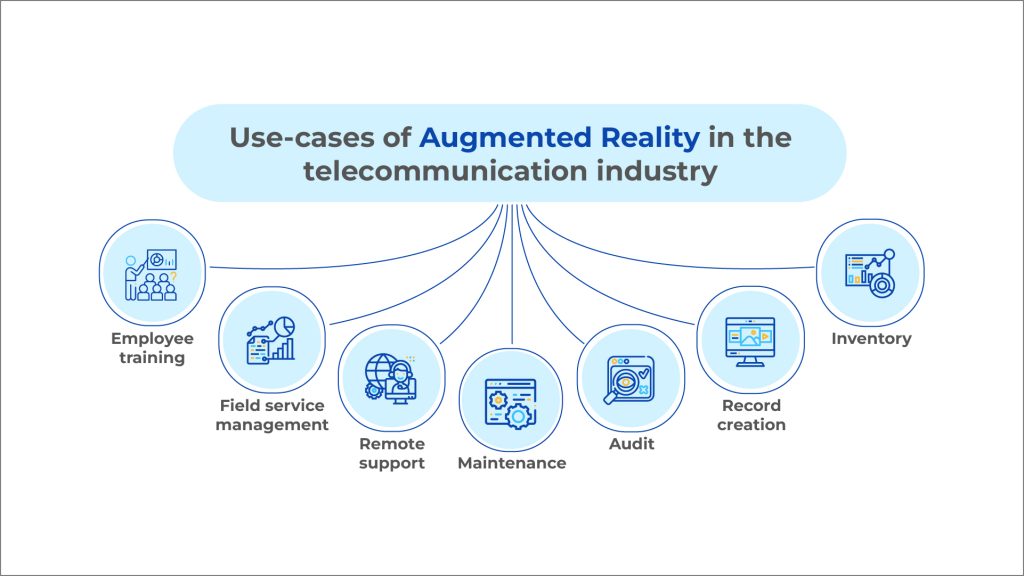
TeamViewer Frontline, an AR platform, gives industrial workers the digital tools they need to speed up processes, decrease error rates, improve quality, and save costs. It uses wearable computing technology to streamline manual work processes.
3. Integrated network management
Integrated network management tools play a role in optimizing network performance and minimizing service disruptions. With network monitoring and troubleshooting functionalities in a unified platform, it’s easier to improve the experience for employees and customers.
IQGeo Integrated Network is a solution to enable operators to deploy and manage fiber and networks across the entire lifecycle, from planning and design to operations and sales. With a single, shared view of network data and streamlined workflows, IQGeo provides telecom the speed, efficiency, and precision to deliver great service.
4. Client portals
Client portals are platforms for customers to access account information and manage services. Telecom organizations are investing in intuitive client portal solutions to deliver personalized experiences.
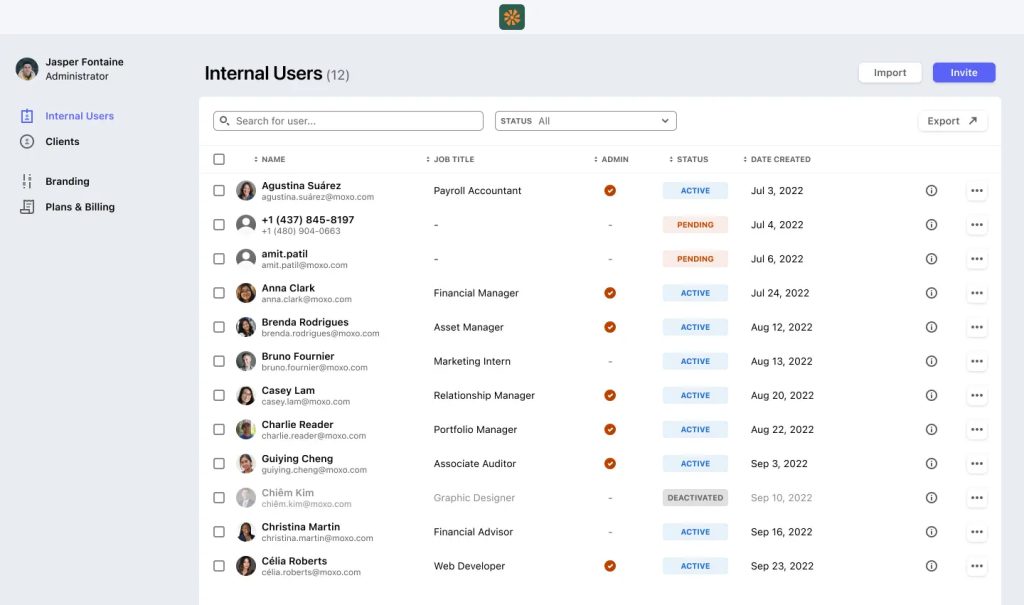
Moxo makes it possible to create branded mobile and web portals to get business done with clients, vendors, and partners. Telecom operators can exchange and sign documents, track tasks, send messages, and launch meetings in one place.
5. Generative AI
Generative artificial intelligence (AI) is enabling telecom operators to unlock new capabilities in network optimization and predictive analytics. As CSPs operationalize their generative AI models, opportunities are emerging in customer care, customer service, and network performance.
According to McKinsey, a Latin American telco is enhancing its customer service AI chatbots to improve agent support, a move it anticipates will reduce costs by 15 to 20%. The telco also is using gen AI to summarize voice and written client interactions in nearly a dozen use cases, with the expectation that it can reduce associated costs by up to 80%.
6. Robotic process automation (RPA)
Robotic process automation (RPA) is revolutionizing back-office operations in the telecom industry by automating repetitive tasks and improving operational efficiency. This automation frees up employees to focus on value-added activities and strategic initiatives.

For example, Telkomsel worked with Deloitte Consulting and UiPath to implement an intelligent automation (IA) platform that eliminates repetitive back-office processes using robotic process automation (RPA).
7. 5G networks
Telecom operators are investing heavily in 5G technology to unlock new revenue streams and drive IoT adoption. This includes everything from autonomous vehicles and smart cities to immersive entertainment and remote healthcare.
That level of connectivity is something the telecommunications industry can’t afford to ignore, as the number of Internet of Things (IoT) devices worldwide is forecast to almost double from 15.1 billion in 2020 to more than 29 billion IoT devices in 2030.
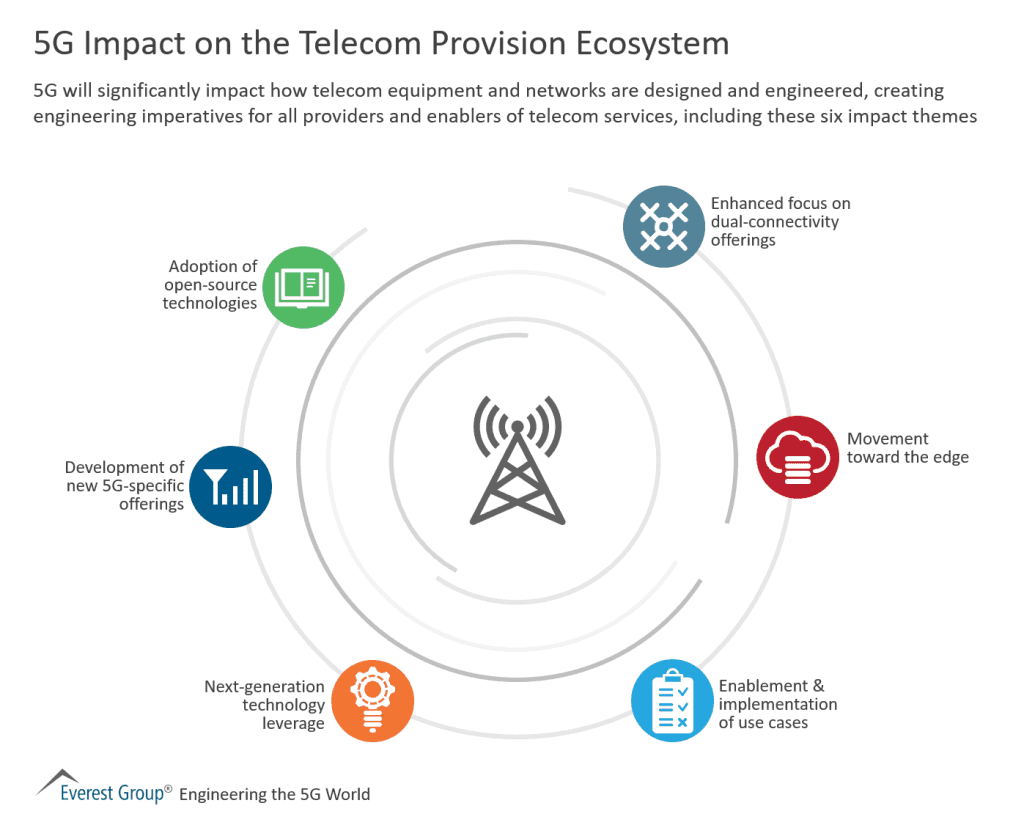
According to Cisco, the 5G network will simplify mobility, with seamless open roaming capabilities between cellular and Wi-Fi access. Mobile users can stay connected as they move between outdoor wireless connections and wireless networks inside buildings without user intervention or the need for users to re-authenticate.
8. AI-powered predictive maintenance
AI-powered predictive maintenance solutions are transforming how telcos manage and maintain their network infrastructure. With the help of machine learning algorithms, telcos can anticipate equipment failures, prioritize maintenance tasks, and extend the lifespan of critical network assets. According to Deloitte, on average, predictive maintenance increases productivity by 25%, reduces breakdowns by 70%, and lowers maintenance costs by 25%.
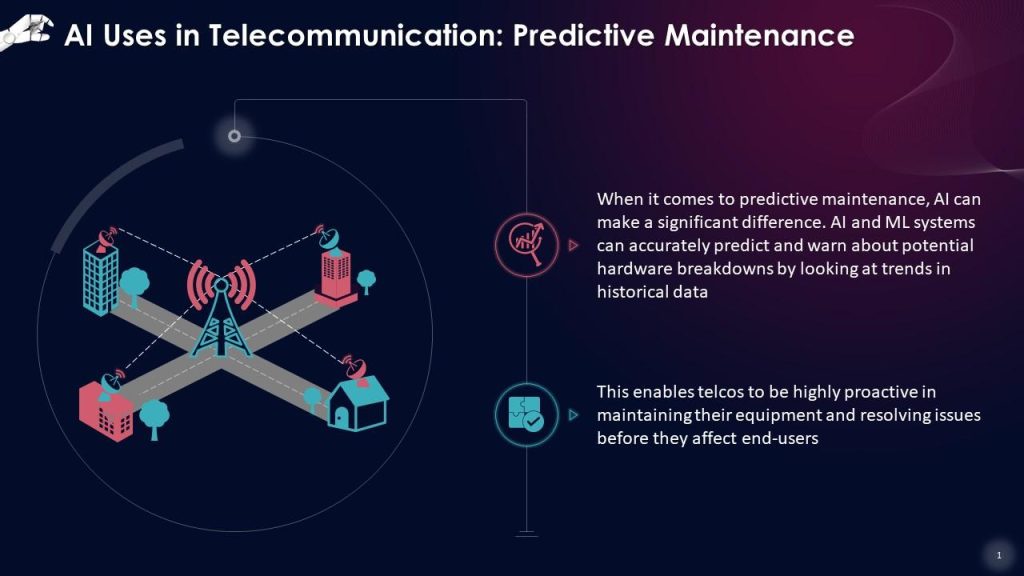
Vodafone, in partnership with Nokia, introduced an artificial intelligence and machine learning-powered system to its pan-European mobile networks to detect and correct anomalies before they impact customers. This detects if a mobile cell area is showing out-of-the-ordinary behavior which could impact the quality of service to customers.
9. Cloud infrastructure
Cloud infrastructure offers scalability cost optimization advantages. For example, Verizon uses AWS Wavelength, a service that embeds AWS compute and storage services within 5G networks, providing mobile edge computing infrastructure for developing, deploying, and scaling ultra-low-latency applications.
10. Over-the-top (OTT) services
The rise of over-the-top (OTT) services poses both challenges and opportunities for traditional telecom operators. OTT providers bypass traditional telecom networks to deliver content and services directly to consumers over the internet. Telcos are adapting by partnering with OTT channels or launching their own OTT platforms.
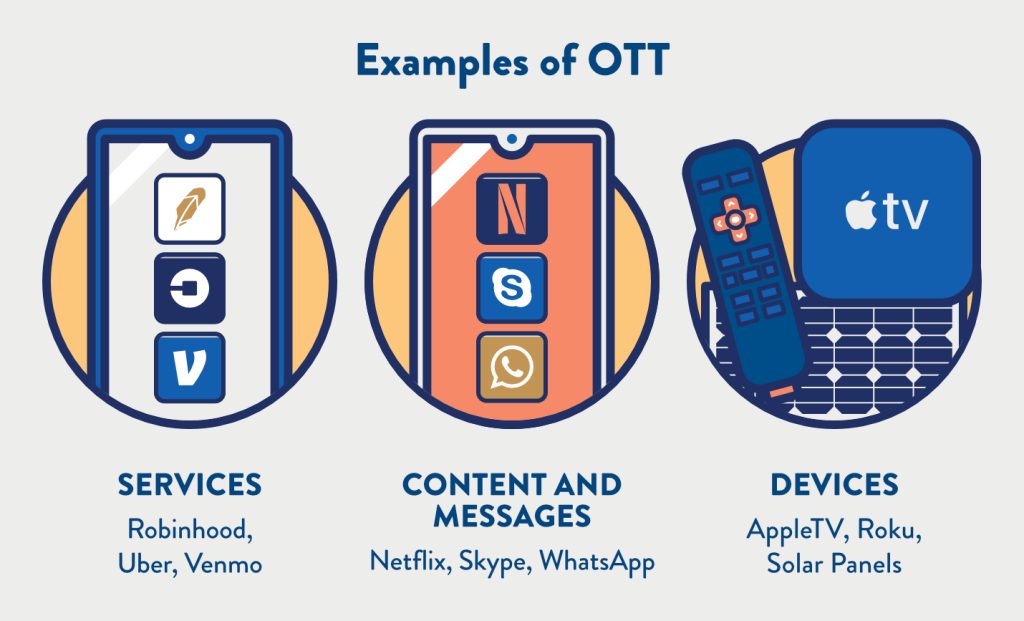
One estimate shows that the global over-the-top (OTT) services market size is anticipated to grow from USD 400 billion to USD 1618.22 billion in 10 years. The market will experience rapid growth due to the increasing number of OTT platform providers.
Digital transformation is challenging, costly, resource-intensive, and has lengthy implementation and migration cycles. To complicate matters, no two digitalization projects are the same, even when comparing two telecommunication companies.
Accelerate your digital transformation by enabling your technology end-users (internal staff, clients, and customers) with contextual in-app guidance and real-time support with Whatfix’s digital adoption platform (DAP).
Whatfix provides telecom IT teams with a no-code Visual Editor to create in-app assistance that contextual guides end-users on complex processes and digital experiences, enabling them to utilize digital platforms correctly and driving professional services business outcomes.

This reduces time-to-proficiency for new end-users and achieves new levels of productivity and proficiency through better software adoption post-implementation. It also provides customers with self-service, personalized, and guided user experiences.
Whatfix empowers telecommunications organizations to:
- Create in-app Tours, Flows, and Task Lists that guide employees and clients step-by-step through digital processes and applications, from end-user onboarding to reinforcement training on complex, multi-step digital processes.
- Enable end-users with Self Help, providing a searchable help wiki that connects to all your process documentation, requirements, FAQs, help articles, and more – that overlays on your digital UI.
- Notify end-users of application process updates, compliance changes, company announcements, and more with Pop-Ups and Beacons.
- Provide contextual Smart Tips that enable end-users with timely information that nudges users to take the correct in-app action.
- Use Field Validation to ensure data is entered in full, in the correct format.
- Collect end-user feedback such as client NPS, staff training and onboarding feedback, and bug identification with In-App Surveys.
- Analyze end-user behavior with User Actions and Enterprise Insights by tracking custom in-app events to optimize user journeys, segment users into cohorts, identify areas of friction, track software license usage, and more.
With Whatfix, you can enable your end-users with contextual, guided, and self-service experiences to help them drive value from digital investments and maximize their productivity. It also actively works to identify areas of end-user friction to continuously optimize user experiences and build digital solutions that are user-friendly and drive telecom business outcomes.
This makes it easier to adjust software training and adoption strategies. All to empower telecommunications employees and clients to maximize the value of digital tools and improve customer experiences.
Ready to learn more? Request a demo to see how telco software clicks better with Whatfix now!

Thank you for subscribing!


